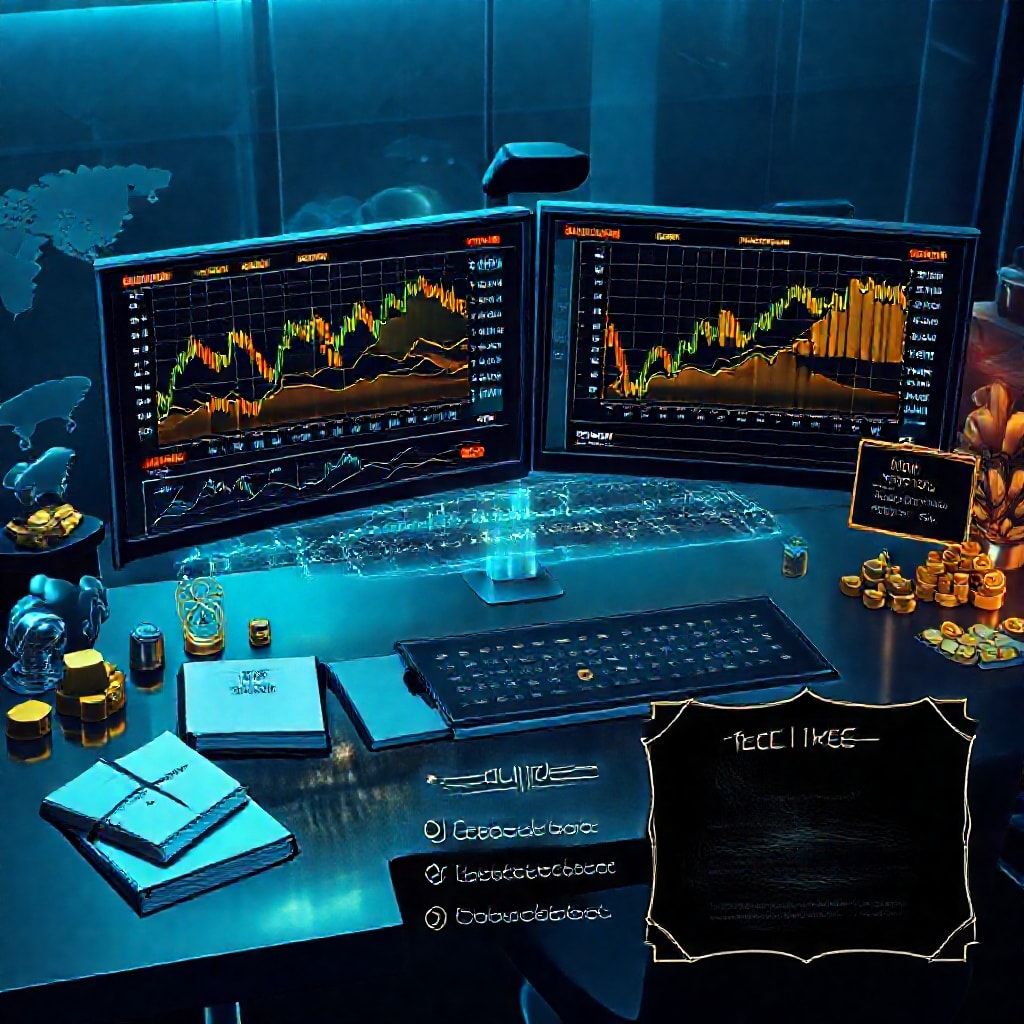How do I analyze market trends for metals futures?
How Do I Analyze Market Trends for Metals Futures?
Introduction
Metals futures move on a mix of supply shocks, demand signals, and the mood of risk across markets. I’ve learned to look beyond daily blips—watch how inventories shift, how the dollar behaves, and where macro data lands. When copper bumps on a mine disruption or silver slides on a weaker inflation print, that tells a story. The challenge is to stitch those stories into a simple, repeatable approach you can apply while staying curious about new tech, data, and markets.

What to watch when you read the metal tape
- The curve and price action: contango or backwardation in the futures curve often signals market expectations about supply tightness or ease ahead. A steep backwardation can hint at near-term scarcity, while a calm curve may reflect balanced expectations.
- Inventories and logistics: warehouse stocks, delivery backlogs, and transportation bottlenecks matter. A rumor of port delays can spark a price move even before data lands.
- Demand drivers: factory activity, construction cycles, and EV-related copper demand link metal prices to broader growth. Geopolitical frictions or policy shifts that affect energy costs also ripple into metals.
- The macro backdrop: USD strength, rate paths, and inflation expectations color asset correlations. Metals often swing with real rates and dollar moves, not in isolation.
- Market sentiment: trader positioning data, headlines, and seasonality can amplify moves. A sudden shift in long vs short bets often precedes a swing.
Data sources and tools you can trust (and question)
- Price history and real-time charts: moving averages, momentum indicators, and volume show trend health and potential reversals.
- Fundamental dashboards: regular reports from exchanges and agencies matter—inventory data from LME/COMEX, mine output trends, and consumption clues from industry groups.
- Cross-asset signals: copper’s fate isn’t only supply; it’s tied to global growth, energy costs, and even commodity currencies. Watch oil, freight rates, and the USD tick.
- Cautions: data revisions happen, and rumors can distort early moves. Cross-check numbers against multiple sources, and keep a clear note of what is baked into prices versus what’s speculative.
A practical framework you can apply
- Start with a small thesis: pick 1-2 metals to track over a week with a defined horizon. Note the catalysts you expect (data releases, supply news, macro shifts).
- Build a simple rule set: identify the trend with a couple of moving averages, confirm with momentum, and set guardrails for risk (stop levels, position size limits).
- Use a quick scenario drill: copper rallies on a supply squeeze; watch inventories, refinery throughput, and freight data. If the curve steepens and momentum confirms, you may tilt toward a long thesis; if inventories rise and momentum fades, you might trim or reverse.
- Track risk on every trade: set max drawdown per position and diversify across metals to avoid single-chain risk.
Web3, DeFi and the evolving world of futures
Decentralized finance offers programmable, transparent rails for some derivatives and settlement mechanisms, but hairsplitting risk remains. Decentralized exchanges and synthetic assets can lower counterparty risk and enable innovative hedges, yet oracle failures, liquidity fragmentation, and regulatory scrutiny pose real challenges. In the near term, expect more interoperable price feeds, improved cross-chain risk controls, and smart contracts that automate position management. The upside is cleaner provenance and programmable risk budgets; the catch is understanding where and how value is stored and settled. The ongoing shift toward decentralized settlement coexists with traditional clearinghouses, so traders who blend both worlds tend to find the most robust footing.
Leverage, risk controls and practical trading notes
- Margin discipline matters: use only a fraction of your total capital on a single metal, with clear stop-loss triggers and a defined take-profit plan.
- Hedging mindset: diversify across a few metals and even across related assets like energy products to smooth out idiosyncratic shocks.
- Leverage with care: in volatile markets, modest leverage can unleash outsized moves in the wrong direction. Favor defined risk budgets and incremental exposure rather than all-in bets.
- Tools for trade execution: charting software with alert thresholds, basic algorithmic checks, and a reliable data feed help you stay in sync with the market’s heartbeat.
The big picture: cross-asset context and future trends
Trading metals sits inside a wider ecosystem that includes forex, equities, crypto, indices, options, and other commodities. A well-rounded trader uses metals to hedge or diversify, while keeping an eye on correlations—USD moves can tilt several corners of the market at once. Looking ahead, smart contracts and AI-driven trading stand to reshape execution, risk management, and backtesting. Expect more automated risk controls, on-chain settlements, and smarter weathering of volatility, provided data integrity and governance keep pace with innovation.
Takeaways you can act on now
- Build a lean, repeatable framework: select a couple of metals, a clear horizon, and a simple rule set you can test and adjust.
- Balance data with intuition: models help, but core market narratives—the real-world supply chain and macro shifts—still drive prices.
- Embrace the tech arc without losing practicality: DeFi and AI bring new tools, but sound risk management and disciplined execution stay your best hedge.
Promotional tagline
Analyze smarter, trade cleaner, and stay ahead of the curve with data-driven insights that turn market noise into defined opportunities. Decode metals trends, harness AI-driven signals, and bridge traditional futures with tomorrow’s tech. This is where clarity meets opportunity in metals futures.